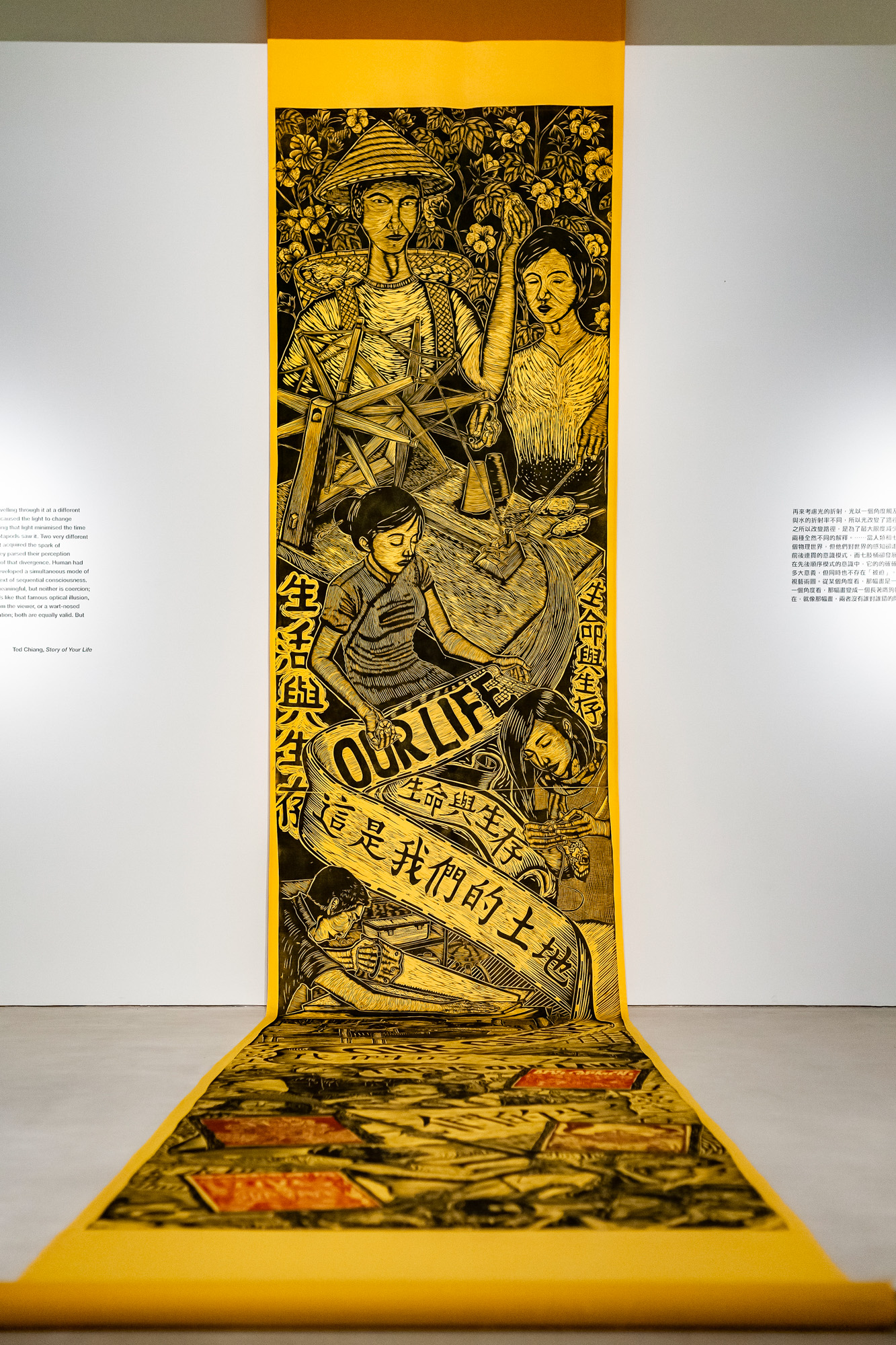Shows
“Sight Unseen: Forking Paths in CHAT’s Collection”


“Sight Unseen—Forking Paths in the CHAT Collection” at Hong Kong's Centre for Heritage, Arts and Textile (CHAT) shed light on the Centre's industrial past as the former Nan Fung Textiles Factory as well as its recent developments as an art space. Inspired by Jorge Luis Borges’s 1941 riddle-like short story “The Garden of Forking Paths,” the group exhibition attempted to stimulate viewers’ imaginations via a maze-like arrangement that juxtaposed factory artifacts with contemporary artworks in a nonlinear, non-narrated fashion. In curator Wang Weiwei's words, these objects and works, “once detached from their original cultural and historical contexts, unbound from time and the narrow scope of their functionality . . . can be interpreted more freely and flexibly.”
The installations in the beginning highlight that perception can be greatly impacted by distance—one’s interpretations change according to one’s proximity to the works in question. At the entrance to the labyrinth, sections of the faded, painted surfaces of two old factory doors, together with the painted Chinese characters “Warehousing Department” on the doors, were cut out in the shape of jigsaw puzzles and pasted onto the gallery wall behind the doors. Part of Chim↑Pom’s It’s the wall world (2014– ), which likens the world to a puzzle, the project features multiple pieces of similarly extracted surfaces from different architectural structures around the globe. Individually, the pieces represent respective histories of the buildings; collectively, they accentuate the interconnectedness between people regardless of cultural and physical constraints, as shown in Chim↑Pom’s video documenting the collective’s travels and interactions with various communities for the project. Nearby, Takahiro Iwasaki's series of spray-painted acrylic panels, Constellation (Hong Kong) (2018), seemingly portray the city at night from a bird’s-eye view. Upon closer inspection, the dazzling lights of the starry sky-like cityscape are in fact composed of logos of luxury shops, restaurants, and banks, resulting in a fantastical map of a consumerism-driven city carved out by multinational corporations.
Elsewhere, the interplay of functionality and aesthetics can be observed in the design plans for the former textile factory and the Centre’s contemporary art commissions. On display were sketches from both, outlining the composition, appearance, and application of the machines or artworks to be built. This curious comparison is highlighted in Lam Tung Pang’s manuscripts for his large-scale, permanent mural installation on CHAT’s rooftop, Wavy Weaving Wall (2018), shown next to the manuals and catalogues of the former factory's spinning machineries. Meticulously drawn with elaborate arrows and calculations, these graphics once served a practical purpose, but they are also standalone artworks signaling blueprints for the future. Here, beauty and usefulness do not contradict, but rather co-exist.
Some works, however, directly address socio-political issues and nonetheless required contextual interpretations. Aziz + Cucher’s large-scale tapestry The Road (2017) depicts refugees, carrying bags over their shoulders and holding phones, being attacked by bullets at an unspecified border. Inspired by Renaissance tapestries, which often depict biblical stories of displacement, the work portrays the current European refugee crisis in an age of digitalization and deglobalization. In the same room, an old yarn count converter was also suspended from the ceiling. A remnant of Hong Kong's colonial days under British rule, the tool allowed factory workers to convert between the British imperial, the standardized metric, and the industry-specific yarn count units. An important factory tool, it acts as a reminder of the historic systemic suppression by the ruling classes to centralize their power via their imposed measurement systems. By allowing for easy conversion between the units, the tool enabled workers the flexibility to change between the systems, thus depoliticizing the systems and restoring them to their original uses as tools for understanding the world. A similar spirit of defiance was illustrated via the determined faces of Hong Kong’s working-class people in Pangrok Sulap’s three-meter-long woodblock print, This is Our Land, Our Culture, Our Life, realized during the city’s 2019 protests.
The curator’s intention of creating a “disorienting" exhibition to inspire new interpretations of the works on display was most apparent among the literary quotations printed on the walls throughout. Selected by Wang, these texts, ranging from lines of ancient Chinese poetry to philosophical writings on culture in addition to excerpts from historic and scientific fictions, furthered the need for self-constructed narratives. The overall experience was indeed one of a boundary-crossing maze that transcended mediums and periods, even if ultimately there was a designer leading the visitor’s way of imagination.

Pamela Wong is ArtAsiaPacific’s assistant editor.
“Sight Unseen – Forking Paths in the CHAT Collection” was on view at the Centre for Heritage, Arts and Textile, Hong Kong, from August 15 to October 11, 2020.







